Beiji Zou
Global and Local Mamba Network for Multi-Modality Medical Image Super-Resolution
Apr 14, 2025Abstract:Convolutional neural networks and Transformer have made significant progresses in multi-modality medical image super-resolution. However, these methods either have a fixed receptive field for local learning or significant computational burdens for global learning, limiting the super-resolution performance. To solve this problem, State Space Models, notably Mamba, is introduced to efficiently model long-range dependencies in images with linear computational complexity. Relying on the Mamba and the fact that low-resolution images rely on global information to compensate for missing details, while high-resolution reference images need to provide more local details for accurate super-resolution, we propose a global and local Mamba network (GLMamba) for multi-modality medical image super-resolution. To be specific, our GLMamba is a two-branch network equipped with a global Mamba branch and a local Mamba branch. The global Mamba branch captures long-range relationships in low-resolution inputs, and the local Mamba branch focuses more on short-range details in high-resolution reference images. We also use the deform block to adaptively extract features of both branches to enhance the representation ability. A modulator is designed to further enhance deformable features in both global and local Mamba blocks. To fully integrate the reference image for low-resolution image super-resolution, we further develop a multi-modality feature fusion block to adaptively fuse features by considering similarities, differences, and complementary aspects between modalities. In addition, a contrastive edge loss (CELoss) is developed for sufficient enhancement of edge textures and contrast in medical images.
A Comprehensive Survey on Magnetic Resonance Image Reconstruction
Mar 10, 2025Abstract:Magnetic resonance imaging (MRI) reconstruction is a fundamental task aimed at recovering high-quality images from undersampled or low-quality MRI data. This process enhances diagnostic accuracy and optimizes clinical applications. In recent years, deep learning-based MRI reconstruction has made significant progress. Advancements include single-modality feature extraction using different network architectures, the integration of multimodal information, and the adoption of unsupervised or semi-supervised learning strategies. However, despite extensive research, MRI reconstruction remains a challenging problem that has yet to be fully resolved. This survey provides a systematic review of MRI reconstruction methods, covering key aspects such as data acquisition and preprocessing, publicly available datasets, single and multi-modal reconstruction models, training strategies, and evaluation metrics based on image reconstruction and downstream tasks. Additionally, we analyze the major challenges in this field and explore potential future directions.
Self-Prior Guided Mamba-UNet Networks for Medical Image Super-Resolution
Jul 08, 2024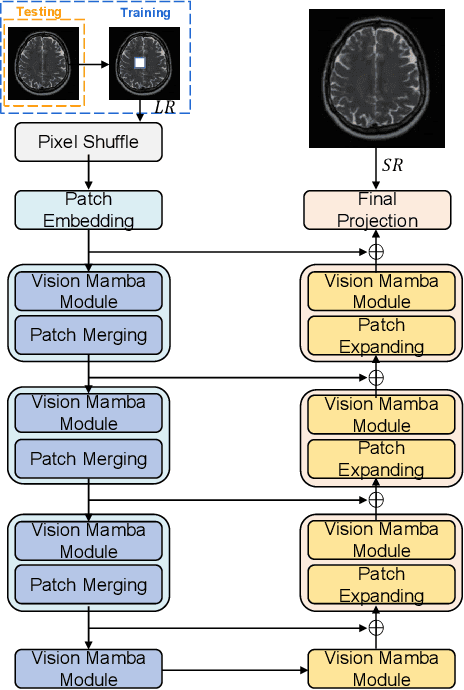

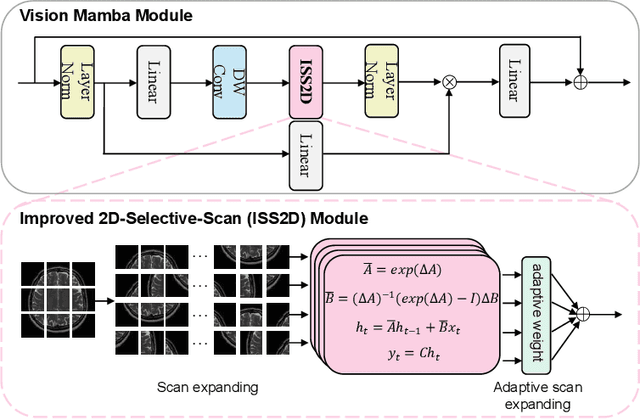
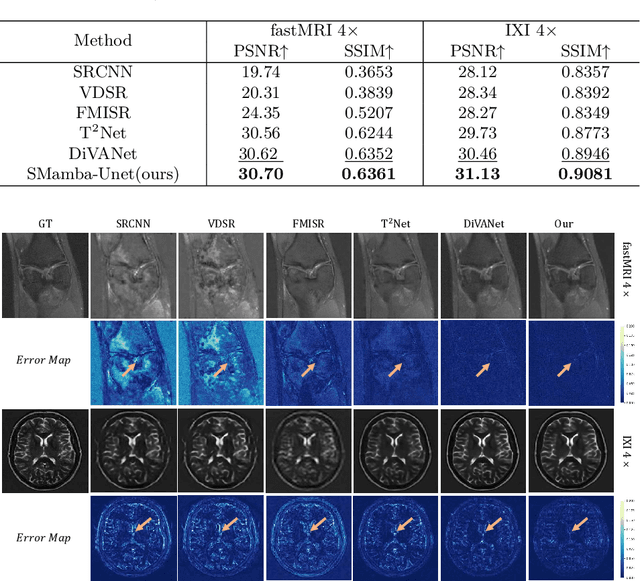
Abstract:In this paper, we propose a self-prior guided Mamba-UNet network (SMamba-UNet) for medical image super-resolution. Existing methods are primarily based on convolutional neural networks (CNNs) or Transformers. CNNs-based methods fail to capture long-range dependencies, while Transformer-based approaches face heavy calculation challenges due to their quadratic computational complexity. Recently, State Space Models (SSMs) especially Mamba have emerged, capable of modeling long-range dependencies with linear computational complexity. Inspired by Mamba, our approach aims to learn the self-prior multi-scale contextual features under Mamba-UNet networks, which may help to super-resolve low-resolution medical images in an efficient way. Specifically, we obtain self-priors by perturbing the brightness inpainting of the input image during network training, which can learn detailed texture and brightness information that is beneficial for super-resolution. Furthermore, we combine Mamba with Unet network to mine global features at different levels. We also design an improved 2D-Selective-Scan (ISS2D) module to divide image features into different directional sequences to learn long-range dependencies in multiple directions, and adaptively fuse sequence information to enhance super-resolved feature representation. Both qualitative and quantitative experimental results demonstrate that our approach outperforms current state-of-the-art methods on two public medical datasets: the IXI and fastMRI.
Deform-Mamba Network for MRI Super-Resolution
Jul 08, 2024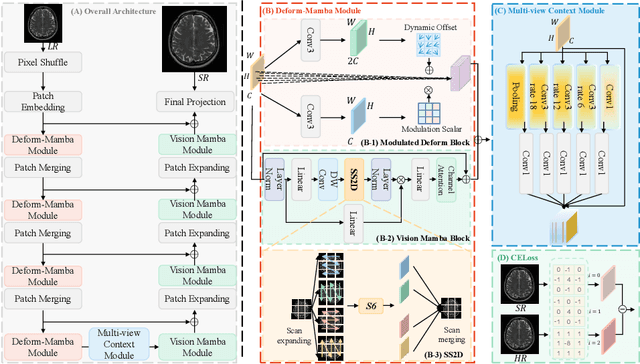


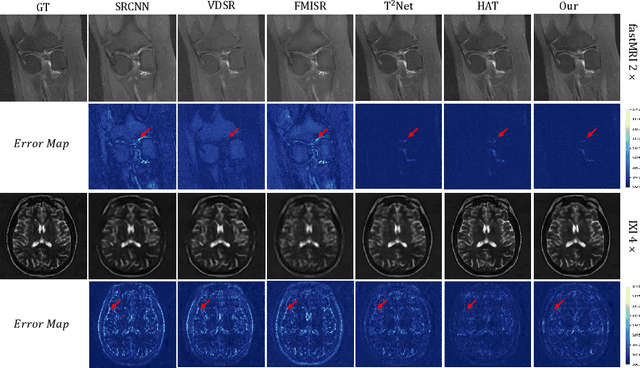
Abstract:In this paper, we propose a new architecture, called Deform-Mamba, for MR image super-resolution. Unlike conventional CNN or Transformer-based super-resolution approaches which encounter challenges related to the local respective field or heavy computational cost, our approach aims to effectively explore the local and global information of images. Specifically, we develop a Deform-Mamba encoder which is composed of two branches, modulated deform block and vision Mamba block. We also design a multi-view context module in the bottleneck layer to explore the multi-view contextual content. Thanks to the extracted features of the encoder, which include content-adaptive local and efficient global information, the vision Mamba decoder finally generates high-quality MR images. Moreover, we introduce a contrastive edge loss to promote the reconstruction of edge and contrast related content. Quantitative and qualitative experimental results indicate that our approach on IXI and fastMRI datasets achieves competitive performance.
ChebMixer: Efficient Graph Representation Learning with MLP Mixer
Mar 25, 2024Abstract:Graph neural networks have achieved remarkable success in learning graph representations, especially graph Transformer, which has recently shown superior performance on various graph mining tasks. However, graph Transformer generally treats nodes as tokens, which results in quadratic complexity regarding the number of nodes during self-attention computation. The graph MLP Mixer addresses this challenge by using the efficient MLP Mixer technique from computer vision. However, the time-consuming process of extracting graph tokens limits its performance. In this paper, we present a novel architecture named ChebMixer, a newly graph MLP Mixer that uses fast Chebyshev polynomials-based spectral filtering to extract a sequence of tokens. Firstly, we produce multiscale representations of graph nodes via fast Chebyshev polynomial-based spectral filtering. Next, we consider each node's multiscale representations as a sequence of tokens and refine the node representation with an effective MLP Mixer. Finally, we aggregate the multiscale representations of nodes through Chebyshev interpolation. Owing to the powerful representation capabilities and fast computational properties of MLP Mixer, we can quickly extract more informative node representations to improve the performance of downstream tasks. The experimental results prove our significant improvements in a variety of scenarios ranging from graph node classification to medical image segmentation.
Improving Neural Radiance Fields with Depth-aware Optimization for Novel View Synthesis
Apr 11, 2023



Abstract:With dense inputs, Neural Radiance Fields (NeRF) is able to render photo-realistic novel views under static conditions. Although the synthesis quality is excellent, existing NeRF-based methods fail to obtain moderate three-dimensional (3D) structures. The novel view synthesis quality drops dramatically given sparse input due to the implicitly reconstructed inaccurate 3D-scene structure. We propose SfMNeRF, a method to better synthesize novel views as well as reconstruct the 3D-scene geometry. SfMNeRF leverages the knowledge from the self-supervised depth estimation methods to constrain the 3D-scene geometry during view synthesis training. Specifically, SfMNeRF employs the epipolar, photometric consistency, depth smoothness, and position-of-matches constraints to explicitly reconstruct the 3D-scene structure. Through these explicit constraints and the implicit constraint from NeRF, our method improves the view synthesis as well as the 3D-scene geometry performance of NeRF at the same time. In addition, SfMNeRF synthesizes novel sub-pixels in which the ground truth is obtained by image interpolation. This strategy enables SfMNeRF to include more samples to improve generalization performance. Experiments on two public datasets demonstrate that SfMNeRF surpasses state-of-the-art approaches. Code is available at https://github.com/XTU-PR-LAB/SfMNeRF
Active Learning in Brain Tumor Segmentation with Uncertainty Sampling, Annotation Redundancy Restriction, and Data Initialization
Feb 05, 2023
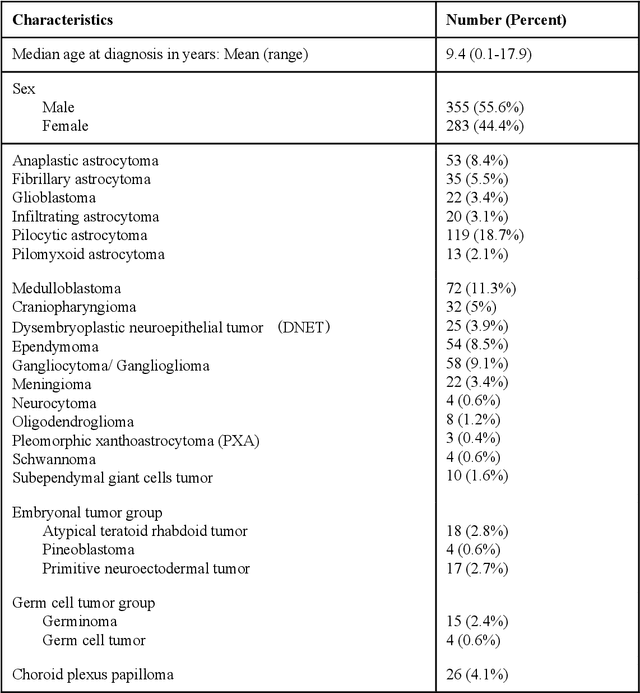
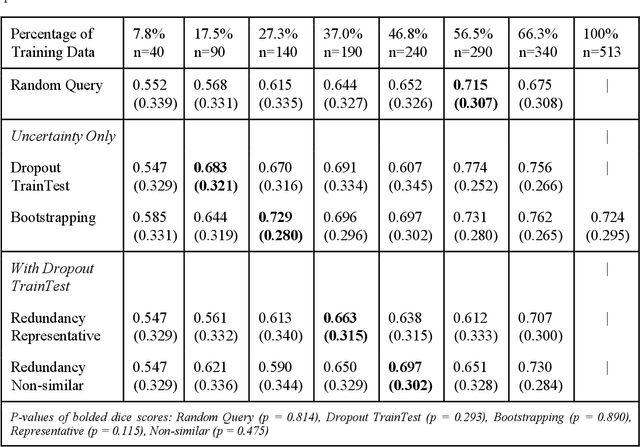

Abstract:Deep learning models have demonstrated great potential in medical 3D imaging, but their development is limited by the expensive, large volume of annotated data required. Active learning (AL) addresses this by training a model on a subset of the most informative data samples without compromising performance. We compared different AL strategies and propose a framework that minimizes the amount of data needed for state-of-the-art performance. 638 multi-institutional brain tumor MRI images were used to train a 3D U-net model and compare AL strategies. We investigated uncertainty sampling, annotation redundancy restriction, and initial dataset selection techniques. Uncertainty estimation techniques including Bayesian estimation with dropout, bootstrapping, and margins sampling were compared to random query. Strategies to avoid annotation redundancy by removing similar images within the to-be-annotated subset were considered as well. We determined the minimum amount of data necessary to achieve similar performance to the model trained on the full dataset ({\alpha} = 0.1). A variance-based selection strategy using radiomics to identify the initial training dataset is also proposed. Bayesian approximation with dropout at training and testing showed similar results to that of the full data model with less than 20% of the training data (p=0.293) compared to random query achieving similar performance at 56.5% of the training data (p=0.814). Annotation redundancy restriction techniques achieved state-of-the-art performance at approximately 40%-50% of the training data. Radiomics dataset initialization had higher Dice with initial dataset sizes of 20 and 80 images, but improvements were not significant. In conclusion, we investigated various AL strategies with dropout uncertainty estimation achieving state-of-the-art performance with the least annotated data.
Reversed Image Signal Processing and RAW Reconstruction. AIM 2022 Challenge Report
Oct 20, 2022
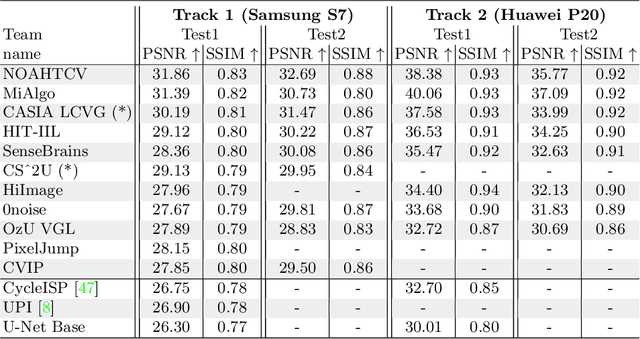
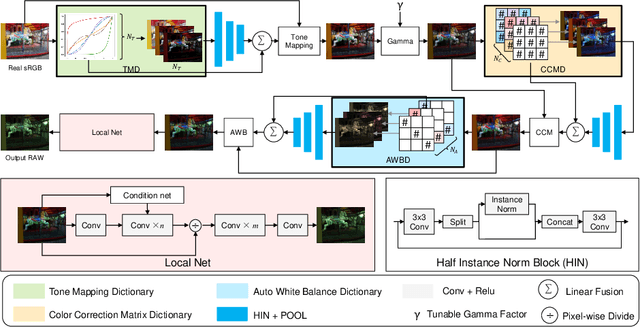
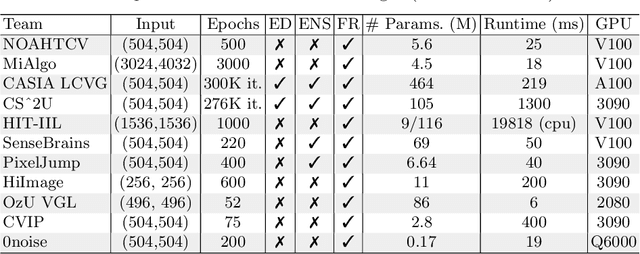
Abstract:Cameras capture sensor RAW images and transform them into pleasant RGB images, suitable for the human eyes, using their integrated Image Signal Processor (ISP). Numerous low-level vision tasks operate in the RAW domain (e.g. image denoising, white balance) due to its linear relationship with the scene irradiance, wide-range of information at 12bits, and sensor designs. Despite this, RAW image datasets are scarce and more expensive to collect than the already large and public RGB datasets. This paper introduces the AIM 2022 Challenge on Reversed Image Signal Processing and RAW Reconstruction. We aim to recover raw sensor images from the corresponding RGBs without metadata and, by doing this, "reverse" the ISP transformation. The proposed methods and benchmark establish the state-of-the-art for this low-level vision inverse problem, and generating realistic raw sensor readings can potentially benefit other tasks such as denoising and super-resolution.
Structure-Aware NeRF without Posed Camera via Epipolar Constraint
Oct 01, 2022



Abstract:The neural radiance field (NeRF) for realistic novel view synthesis requires camera poses to be pre-acquired by a structure-from-motion (SfM) approach. This two-stage strategy is not convenient to use and degrades the performance because the error in the pose extraction can propagate to the view synthesis. We integrate the pose extraction and view synthesis into a single end-to-end procedure so they can benefit from each other. For training NeRF models, only RGB images are given, without pre-known camera poses. The camera poses are obtained by the epipolar constraint in which the identical feature in different views has the same world coordinates transformed from the local camera coordinates according to the extracted poses. The epipolar constraint is jointly optimized with pixel color constraint. The poses are represented by a CNN-based deep network, whose input is the related frames. This joint optimization enables NeRF to be aware of the scene's structure that has an improved generalization performance. Extensive experiments on a variety of scenes demonstrate the effectiveness of the proposed approach. Code is available at https://github.com/XTU-PR-LAB/SaNerf.
Estimation of 3D Human Pose Using Prior Knowledge
May 09, 2021



Abstract:Estimating three-dimensional human poses from the positions of two-dimensional joints has shown promising results.However, using two-dimensional joint coordinates as input loses more information than image-based approaches and results in ambiguity.In order to overcome this problem, we combine bone length and camera parameters with two-dimensional joint coordinates for input.This combination is more discriminative than the two-dimensional joint coordinates in that it can improve the accuracy of the model's prediction depth and alleviate the ambiguity that comes from projecting three-dimensional coordinates into two-dimensional space. Furthermore, we introduce direction constraints which can better measure the difference between the ground truth and the output of the proposed model. The experimental results on the H36M show that the method performed better than other state-of-the-art three-dimensional human pose estimation approaches.
 Add to Chrome
Add to Chrome Add to Firefox
Add to Firefox Add to Edge
Add to Edge